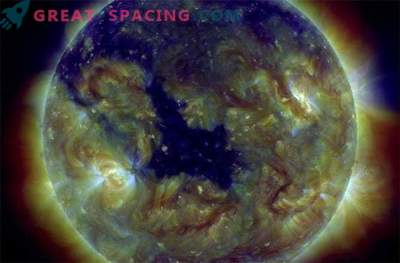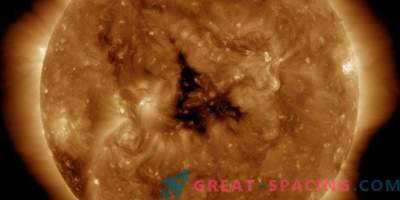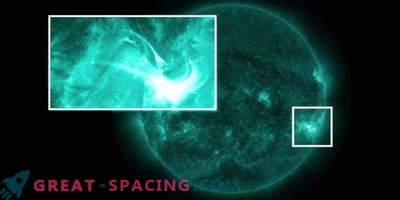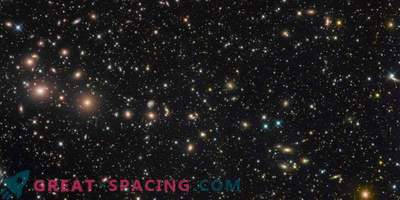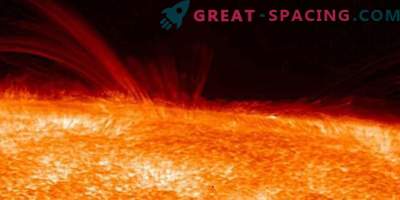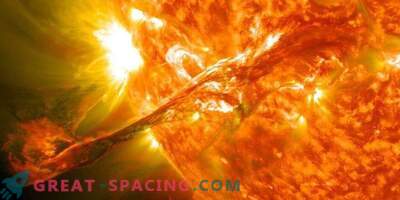
Composite image of an erupting solar prominence from SDO (August 31, 2012)
European scientists believe that solar tornadoes have no rotation effect. A new analysis of giant structures that are several times the size of the Earth indicates that the name may have been chosen is not quite accurate.
Solar tornadoes began to be observed for the first time at the beginning of the 20th century. The term has been popularized for several years, when scientists reviewed the AIA tool from the Solar Dynamics Observatory (SDO). They demonstrated the apparent rotation of hot plasma in UV light. The shape of the structure resembled earth tornadoes.
Using the Doppler effect, we managed to add a third dimension and calculate the velocity of the moving plasma, as well as its directionality, density and temperature. Observations of several years provided a complete picture of the structure of the magnetic field supporting the plasma in the prominences.

Composite image of the prominence of July 15, 2014. It is displayed after alignment: raster frame EIS (green), slit gap IRIS (red), frames from SOT (blue). The white outlines indicate the intensities of THEMIS D3. Background Image - AIA 304 It turned out that the magnetic field did not protrude vertically, and the plasma moved mainly horizontally along the magnetic field line. We manage to examine the forms of tornadoes in the photographs due to projection effects where data on the line of sight are compressed on the sky plane.
The overall effect resembles a trail from an airplane in the sky: the vehicle moves horizontally at a fixed height, but we see the trail start overhead and end on the horizon.
For giant solar tornado watched about 100 years. It turns out that they got their name solely because of the apparent similarity with the shape of the earth formation. But here the similarities end. Earth tornadoes are created from powerful winds and are incredibly mobile. But solar - magnetized gas.
They also keep in touch with the base of solar protuberances — the magnificent concentrations of cold plasma in an extremely hot solar corona. They can be seen in the form of pink structures during a period of total solar eclipses.
Solar tornadoes do not act as a direct threat to our planet. But their appearance causes cosmic weather — a potentially destructive force for the Earth, satellites, and communication networks.
